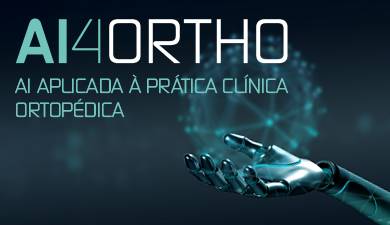HPA Urology
Differentiation & innovation, the future starts today
HPA Magazine 18
In recent years and due to the most recent state-of the-art equipment now available, Urology as a medical Specialty, has development greatly as far as diagnostic exams are concerned. Surgical interventions have also improved substantially due to the systematization of minimally invasive techniques and the introduction of robotic surgery.
At the moment it is possible to access this specialty in thirteen of the nineteen units of the HPA Health Group, although some tests and/or techniques can only be carried out in the hospitals. With regards to human resources, the team consists of nineteen urologists, some with specialized training and differentiated experience, permitting the possibility of a wide range of procedures and exams.
The team is fully committed to the challenge of providing excellent care and a sustained growth, which together will permit Urology as a medical specialty to be an added value for both the patient, the Specialty, the HPA Group and also for the Algarve, Alentejo and Madeira.
At the same time, the team has also been involved in education and research, supervising internships for medical students at the University of Algarve. They have also been preparing its first Conference which will take place in October. According to Prof. Dr Tiago Rodrigues – scientific coordinator of the event – the main objective of these seminars is to promote joint knowhow of urology as a specialty as well as topics dealing with urology, permitting an effective communication network for the benefit of patients and also to foster future research and training collaboration in Urology. It is our conviction that these Conferences could represent a turning point in health care in Urology as a Specialty in the Algarve and mark the beginning of closer network collaboration.
Presently, two new types of equipment are available; one used for diagnostic purposes, Prostatic Microechography, which is the only one available in Portugal at the moment, and another used in the treatment of erectile dysfunction, shock waves which is the first equipment available in the southern region of the country. The HPA Health Group was also pioneers in various innovative procedures such as brachytherapy in the treatment of prostate cancer, laparoscopic surgery of the prostate and of the bladder as well as using robotic instruments resulting in minimally invasive surgery.

PROSTATE MICROULTRASOUND: IMPROVING THE DIAGNOSIS OF PROSTATE CANCER
There are two words that are transversally associated with the success of overcoming any type of cancer: precision and precocity. In other words, the more we are able to evolve in diagnostic technology (especially in terms of precision) and the earlier we can act, the better results we will be able to achieve in terms of survival and quality of life.
One of these examples, available for the past 4 months at the HPA in Gambels, in the Urology Services, is high-definition prostate microultrasound.
Current conventional ultrasound systems operate at 8 to 12 MHz frequencies. Recently, innovative ultrasound systems have been developed that, operating at higher frequencies (21 to 29 MHz), improve image resolution by about 300%. This increase in resolution, as is the case with prostate microultrasound, allows for a more detailed and accurate visualization and characterization of images of the prostate, permitting identification of regions suspected of malignancy increasing the probability of detecting tumours.
Several studies have proven that a more detailed intraprostatic visualization, provided by a high-resolution ultrasound system, improves the detection rate of tumour lesions compared to conventional ultrasound.
In addition, these systems have also contributed to the stratification risk of prostatic carcinoma. With high-risk diseases an early and precise detection, will result in insignificant disease being detected and will consequently, restrict the administration of unnecessary therapies in these cases.
We are very happy with the results we have obtained, reveals Prof. Dr. Tiago Rodrigues, a great promoter of this technique, which is, for now, the only equipment available in Portugal. Of the 51 procedures we have already performed, we were able to determine 65% of these were confirmed cases of prostate cancer. A figure that clearly reveals the importance of this test as a means of obtaining an early diagnosis, with all that it implies in terms of survival and quality of life for patients.
A prostate carcinoma is the most frequently diagnosed malignancy in men in the Western world and the second leading cause of cancer death in men. These indicators reveal the importance of an early diagnosis and accurate staging in implementing adequate, timely and personalized therapy.

Currently, the diagnosis of a prostate carcinoma is established through an ultrasound-guided prostate biopsy (gold-standard), usually performed after an altered PSA result, rectal examination or imaging exams when cancer is suspected (MRI or transrectal ultrasound). However, this diagnostic sequence sometimes has significant limitations.
These imaging exams makes it possible to perform guided biopsies, as opposed to classical randomized biopsies, either by high-definition ultrasound alone, or by using fusion techniques with the images previously obtained in an MRI. In addition, at the HPA, all biopsies are performed under sedation, ensuring a painless and comfortable procedure, as well as transperineally, to drastically reduce the risk of infection.
LOW INTENSITY SHOCK WAVE THERAPY: A NEW TREATMENT FOR ERECTILE DYSFUNCTION
Erectile dysfunction (ED) is the recurrent inability to obtain and maintain an erection that allows for satisfactory sexual activity. It is a symptomatic manifestation of isolated or associated pathologies.
A normal erection occurs when a muscle within the penis relaxes. This allows for increased blood flow through the penile arteries, filling two chambers inside the penis and restricting venous outflow. It is a very complex process, affected by changes associated with arterial hypertension, diabetes, smoking, dyslipidaemia, neurological diseases, hormonal disorders, chronic use of some medication and psychological disorders.
ED is the most common male sexual dysfunction after the age of 40. It is estimated that more than 150 million men in the world have some degree of ED, and there are studies that point to a prevalence above 50% in the 40 -70 age group. However, although the increase in cases with age is evident, ED is not an inevitable consequence of aging and therefore should not be considered taboo or a tragedy.
ED can have a variety of underlying causes; vascular origin, where atherosclerosis, arterial hypertension and smoking are the main reasons; endocrine origin, such as the presence of diabetes, metabolic syndrome or changes in sex hormones. It is estimated that between 35% and 75% of diabetics may have some degree of ED, values that can be overestimated if diabetes is added to arterial hypertension. Some neurological conditions also precipitate the presence of ED, such as Parkinson's disease, dementia, demyelinating diseases and spinal cord injuries at levels that affect erection and/or ejaculation.
The first assessment of ED is clinical and is carried out in the doctor’s consulting room. This includes studying the patient’s sexual history and that of his/her partner (sexual preferences, anxiety about sexual performance, level of attraction to the partner), conflict within the relationship, among others). Therefore, identifying comorbidities and/or risk factors is very important in order to identify the possible origin and recommend the best treatment.
The initial approach to ED is to control risk factors and education for lifestyle changes, making the patient aware of the pathology, forms of treatment and expected results.
In addition to lifestyle changes, counselling and psychotherapy/sexual therapy, the classic therapeutic treatment includes several oral, intra-arterial and injectable drugs, as well as the placement of penile prostheses.
In recent years, therapy with Low Intensity Shock Waves, also known as electromagnetic waves, has revolutionized the approach to ED. It is one more non-invasive therapeutic option with a great safety profile (negligible adverse effects). It works by recovering existing vascular lesions in the erectile tissue, that is, the possibility of revascularizing damaged tissue thus activating myofibroblasts, considering that blood flow is essential for an erection.
Recent studies show that this treatment alone is effective, but also as a way to potentiate the effects of pharmacological therapy. Currently, Low Intensity Shock Wave Therapy is part of the main international societies’ guidelines, such as the European Association of Urology.
MINIMALLY INVASIVE (ROBOTIC) SURGERY
The Urology Group has been in the vanguard of complex and differentiated interventions for several years now, performing retrograde renal surgeries since 2014 and laparoscopic prostatectomies and laparoscopic cystectomies since 2018. Last year they performed a total intracorporeal robot-assisted laparoscopic surgery (ileal conduit urinary diversion), which may have been a national novelty and whose video will be presented at the national congress this year. This advance was possible due to robotic forceps being used in laparoscopic surgery for the first time in the Iberian Peninsula.
Robotic instruments were used for the first time in a case of carcinoma of the prostate in December 2020. In laparoscopic surgery, the use of robotic instruments is safer in terms of the surgical procedure, permitting better results for patients, in functionality and quality of life.
This highly sophisticated equipment allows the surgeon to remove the prostate and surrounding tissue with precision and accuracy. When used in laparoscopic surgery, it has the advantage of resulting in a faster and more accurate surgical intervention.
High-definition 3D technology is also available at the HPA Group, that offers high-quality, enlarged, three-dimensional images, in addition to a superior visualization of anatomical structures.
Robotic surgery provides patients with faster control of the urinary sphincter, a shorter hospital stays and the need for a urine catheter for a shorter period of time (compared to open surgery).
For urologist surgeons Tiago Rodrigues and José Manuel Gomes, these robotic instruments give us the advantage of not being limited to the equipment; that is, this technology allows the surgeon to perform all the gestures he wants to. In addition, and even more importantly, in the specific case of this type of surgery (a prostatectomy), these clamps offer greater functional preservation, in terms of urinary continence and sexual function. We believe that this technological improvement and surgical quality has put us on the path to excellence in the treatment of prostate carcinoma.
INNOVATIVE SURGERIES
If in the Algarve innovative equipment has been used to develop new techniques, at the Hospital Particular da Madeira, the team has become known for performing innovative surgeries.
The first took place just 6 months after its opening in May 2019. This surgery was performed for the first time in the Island of Madeira, for the treatment of renal lithiasis by retrograde intrarenal route, associated with laser lithotripsy.
The following was performed less than three months later, a radical laparoscopic prostatectomy. This surgery is the best option in the face of localized prostate cancer. Laparoscopic techniques are minimally invasive procedures that provide significant advantages for the patient.
This year, the first radical cystoprostatectomy with laparoscopic bilateral pelvic lymphadenectomy was performed to treat a malignant neoplasm of the bladder.









